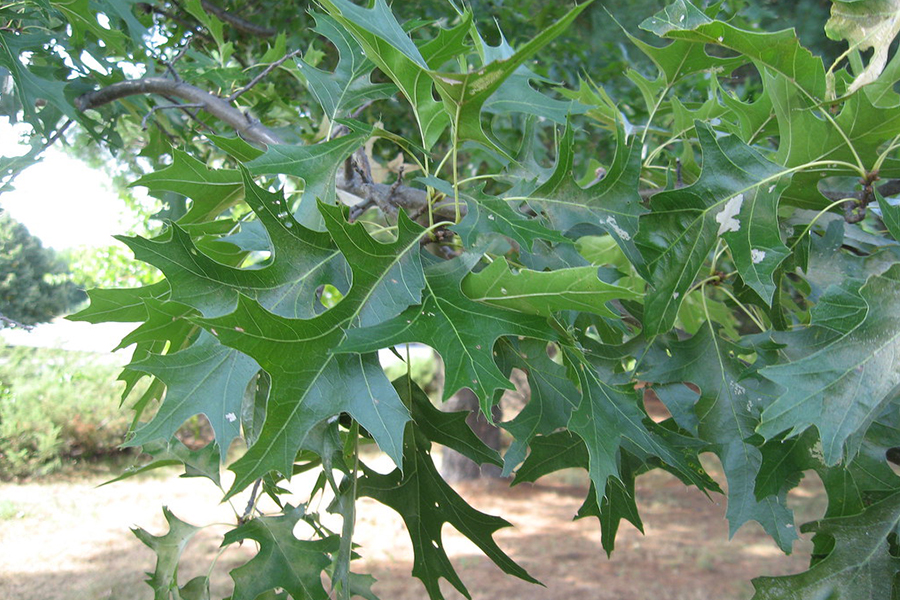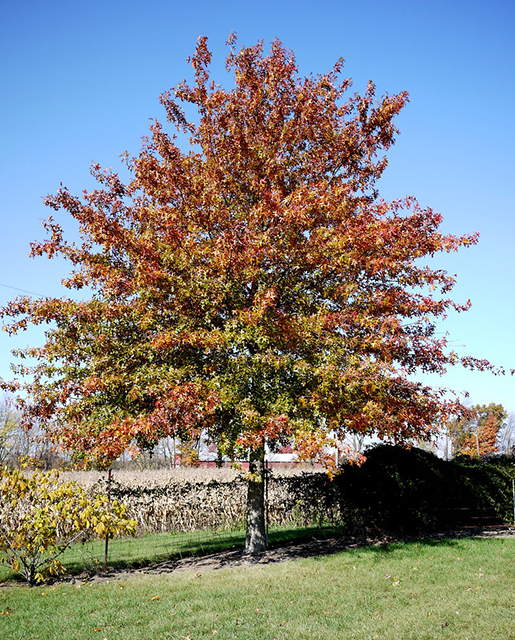Quercus palustris
Pin oak is a deciduous tree native to the eastern and central United States. It features attractive shiny leaves and is a staple in urban forestry.
Location
One of our pin oaks can be spotted from either the Magnolia or Appleton Road trails if you look toward where Hadwen’s home would have once stood. Though there is no record of Hadwen planting a pin oak, it’s not unlikely that one could have been growing on the property for many years, since they grow prolifically in the area.


History at Hadwen
Pin oak is documented in the property as early as 1978, however, a study conducted in 1971 didn’t note any pin oak on the property. It is unclear whether it was missed or if the 1970s brought with them the first planting of pin oak in the arboretum. Either way, it can still be found on the property today and was included again in the most recent study conducted in 2020.
Keep Learning
Detailed Species Information
Pin oak, also known as swamp Spanish oak, is a deciduous oak tree in the family Fagaceae native to the eastern and central United States. Typically this tree grows up to 60–70 feet ( 18–21 meters) in height and 3.5 feet (1 meter) in trunk diameter. Mature trees have a spreading canopy with lower branches drooping down and upper branches stretching up. The bark of mature pin oaks is rough and gray-brown. The dark green and shiny leaves are five or seven-lobed with particularly deep U-shaped dips in between the lopes. In the fall, these leaves turn bronze. In the spring, the pin oak produces catkins which develop into acorns after two seasons.
The pin oak is primarily a wetland tree, preferring rich, moist, and acidic soils. It is also considered to be shade intolerant. The wood of the pin oak is considered to be of a lower quality than the wood than that of red oak but is still used for construction and firewood. In landscaping, the pin oak is commonly used as a shade tree or street tree due to its unique shiny leaves, rapid growth rate, and tolerance to pollution.
